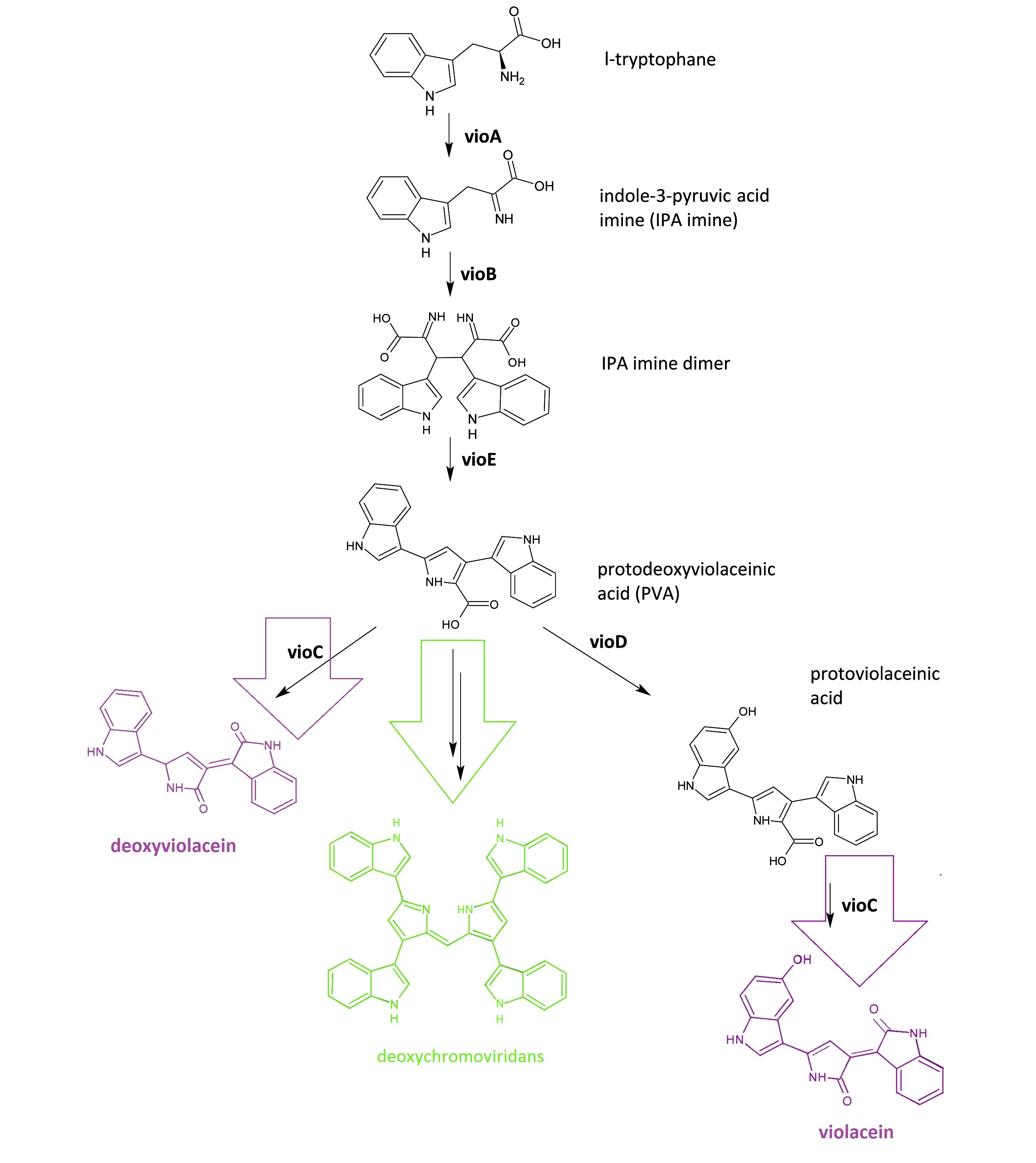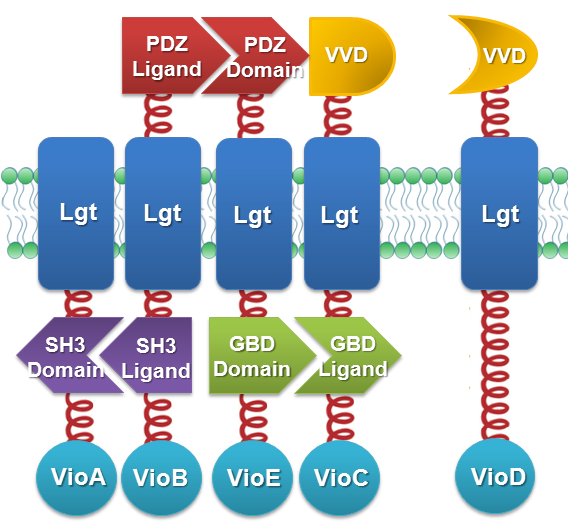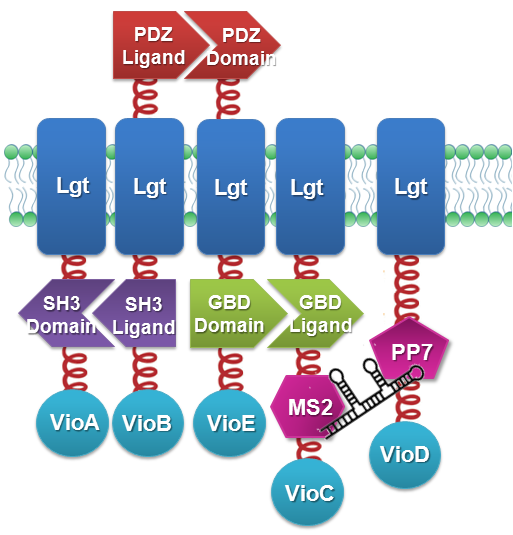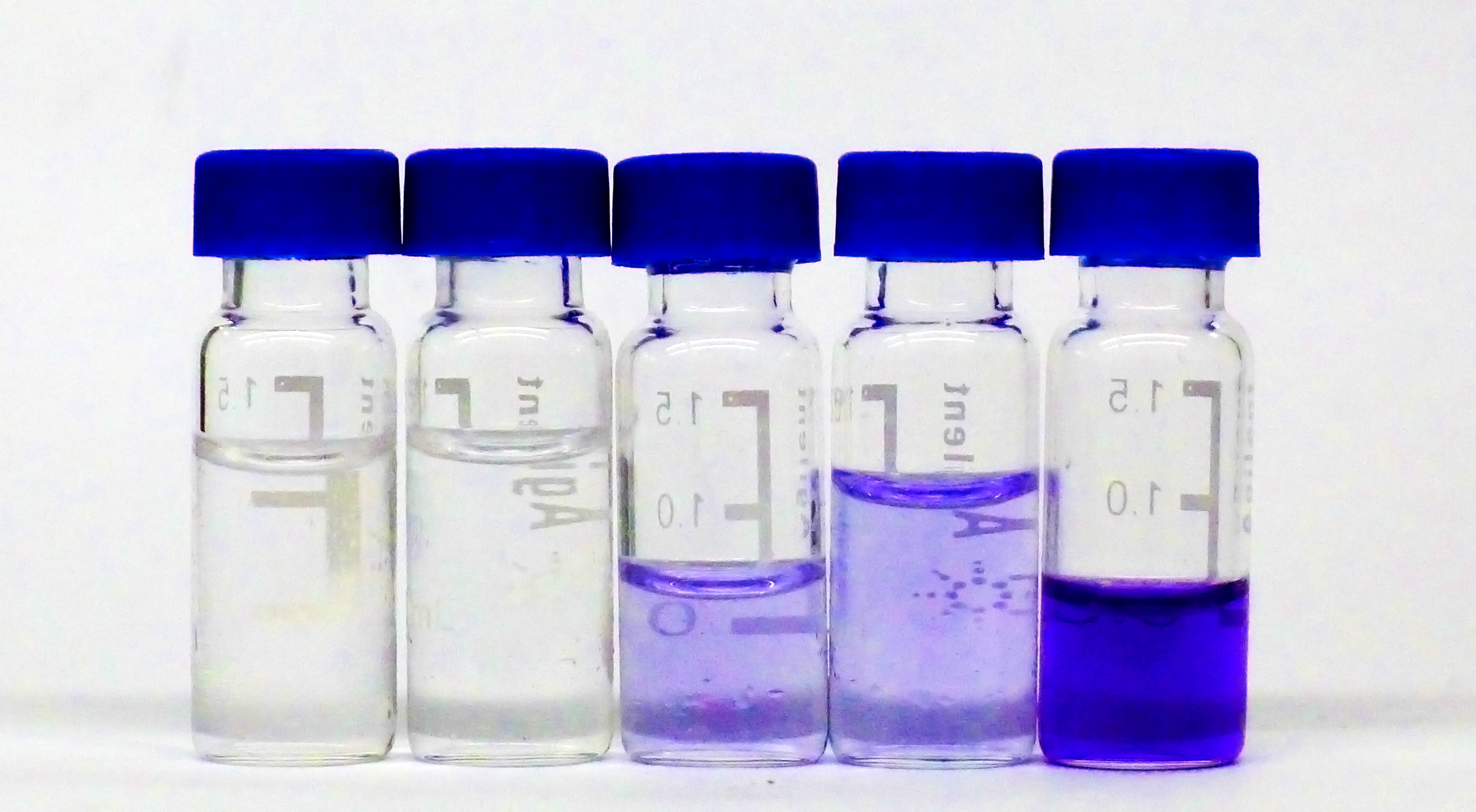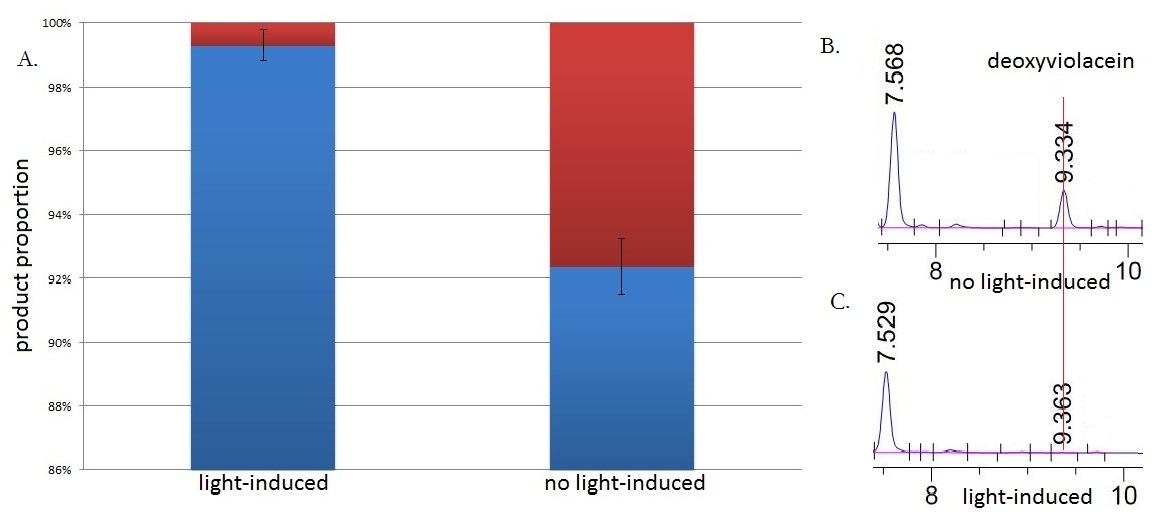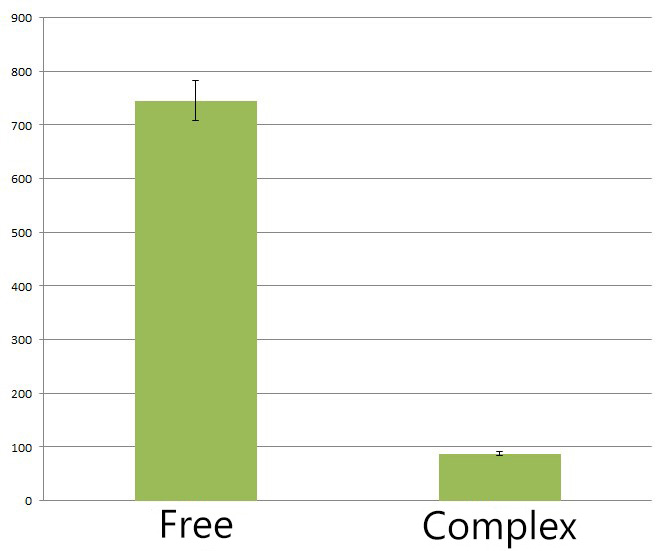Team:SJTU-BioX-Shanghai/Project/project2.1
From 2012.igem.org
Zhiantinglan (Talk | contribs) (→Membrane Rudder - Violacein & Deoxyviolacein synthetic pathway) |
Zhiantinglan (Talk | contribs) (→Membrane Rudder Sensing Light Signal) |
||
| (5 intermediate revisions not shown) | |||
| Line 24: | Line 24: | ||
<td valign="top" width="750"> | <td valign="top" width="750"> | ||
__NOTOC__ | __NOTOC__ | ||
| - | =Membrane Rudder <br><br> - Violacein & Deoxyviolacein | + | =Membrane Rudder <br><br> - Violacein & Deoxyviolacein Synthetic Pathway= |
{{Template:12SJTU_part_summary_head}} | {{Template:12SJTU_part_summary_head}} | ||
| Line 79: | Line 79: | ||
[[File:12SJTU_VVD_Construction.png|center|500px|thumb|''Fig.2'' :Construction details of light-sensing ''Membrane Rudder''. VVD acts as a blue light sensor.]] | [[File:12SJTU_VVD_Construction.png|center|500px|thumb|''Fig.2'' :Construction details of light-sensing ''Membrane Rudder''. VVD acts as a blue light sensor.]] | ||
| - | For VioB and VioE only function normally in | + | For VioB and VioE only function normally in dimeric state, free VioB and free VioE were coexpressed with membrane anchored VioA, B, C, D and E (''Fig.2'')to ensure the normal function of the whole system. |
| - | Bacteria in experimental group were induced at a L-Arabinose concentration of 0.1%. One group of bacteria expressing full set of light-sensing ''Membrane Rudder'' | + | Bacteria in experimental group were induced at a L-Arabinose concentration of 0.1%. One group of bacteria expressing full set of light-sensing ''Membrane Rudder'' is incubated under blue light. The other group of bacteria expressing full set of light-sensing ''Membrane Rudder'' are incubated in the dark. In each comparative group, bacteria prepared for light induction and dark incubation are taken from the same sample. |
The BioBrick Part VVD-MA5-vioC and VVD-MA6-vioD is [http://partsregistry.org/Part:BBa_K771205 Part:BBa_K771205] and [http://partsregistry.org/Part:BBa_K771206 Part:BBa_K771206], respectively. For MA2-VioA, MA3-VioB, MA4-VioE, the corresponding part is [http://partsregistry.org/Part:BBa_K771201 Part:BBa_K771201], [http://partsregistry.org/Part:BBa_K771202 Part:BBa_K771202], [http://partsregistry.org/Part:BBa_K771203 Part:BBa_K771203], respectively. | The BioBrick Part VVD-MA5-vioC and VVD-MA6-vioD is [http://partsregistry.org/Part:BBa_K771205 Part:BBa_K771205] and [http://partsregistry.org/Part:BBa_K771206 Part:BBa_K771206], respectively. For MA2-VioA, MA3-VioB, MA4-VioE, the corresponding part is [http://partsregistry.org/Part:BBa_K771201 Part:BBa_K771201], [http://partsregistry.org/Part:BBa_K771202 Part:BBa_K771202], [http://partsregistry.org/Part:BBa_K771203 Part:BBa_K771203], respectively. | ||
| Line 93: | Line 93: | ||
[[File:12SJTU_RNA_construction.png|center|500px|thumb|''Fig.3'' :Construction details of RNA-sensing ''Membrane Rudder''. RNA aptamer binding protein MS2 and PP7 act as an RNA signal sensors.]] | [[File:12SJTU_RNA_construction.png|center|500px|thumb|''Fig.3'' :Construction details of RNA-sensing ''Membrane Rudder''. RNA aptamer binding protein MS2 and PP7 act as an RNA signal sensors.]] | ||
| - | Free VioB and free VioE were coexpressed with membrane anchored VioA, B, C, D and E | + | Free VioB and free VioE were coexpressed with membrane anchored VioA, B, C, D and E to ensure the normal function of the whole system. |
Bacteria in experimental group were induced at a L-Arabinose concentration of 0.1%. One group of bacteria expressing full set of RNA-sensing ''Membrane Rudder'' are incubated under blue light. The other group of bacteria expressing full set of RNA-sensing ''Membrane Rudder'' are incubated in the dark. In each comparative group, bacteria prepared for light induction and dark incubation are taken from the same sample. | Bacteria in experimental group were induced at a L-Arabinose concentration of 0.1%. One group of bacteria expressing full set of RNA-sensing ''Membrane Rudder'' are incubated under blue light. The other group of bacteria expressing full set of RNA-sensing ''Membrane Rudder'' are incubated in the dark. In each comparative group, bacteria prepared for light induction and dark incubation are taken from the same sample. | ||
| Line 112: | Line 112: | ||
Altering direction of violacein & deoxyviolacein synthetic pathway can be realized by dynamically controlling the aggregation state of crucial enzymes. Through the blue light induction, all five enzymes aggregate together. Thus branch pathway producing deoxyviolacein by VioA, B, E and C is inhibited because PVA is more preferably hydroxylated by VioD. On the other hand, as long as blue light is absent from the bacteria, VioD will disassociate with assembling VioA, B, E and C, leading to the production of deoxyviolacein. | Altering direction of violacein & deoxyviolacein synthetic pathway can be realized by dynamically controlling the aggregation state of crucial enzymes. Through the blue light induction, all five enzymes aggregate together. Thus branch pathway producing deoxyviolacein by VioA, B, E and C is inhibited because PVA is more preferably hydroxylated by VioD. On the other hand, as long as blue light is absent from the bacteria, VioD will disassociate with assembling VioA, B, E and C, leading to the production of deoxyviolacein. | ||
| - | [[Image:P1000998.JPG|thumb| | + | [[Image:P1000998.JPG|thumb|400px|center|''Fig.4'' :Collections of different peaks in HPLC results, ready to undergo MS for molecule construction verification.]] |
| - | We ran an HPLC (SHIMADZU LC-20AP,C18 reversed column) test with the purple samples extracted from the bacteria culture. Then we ran mass spectrometry (Thermo Ultra GC-ISQ) test and thus further confirmed the molecular constitution of main peaks in HPLC results. | + | We ran an HPLC (SHIMADZU LC-20AP, C18 reversed column) test with the purple samples extracted from the bacteria culture. Then we ran mass spectrometry (Thermo Ultra GC-ISQ) test and thus further confirmed the molecular constitution of main peaks in HPLC results. |
The HPLC results perfectly fit our prediction. | The HPLC results perfectly fit our prediction. | ||
Latest revision as of 03:55, 27 October 2012
| ||
|
 "
"
